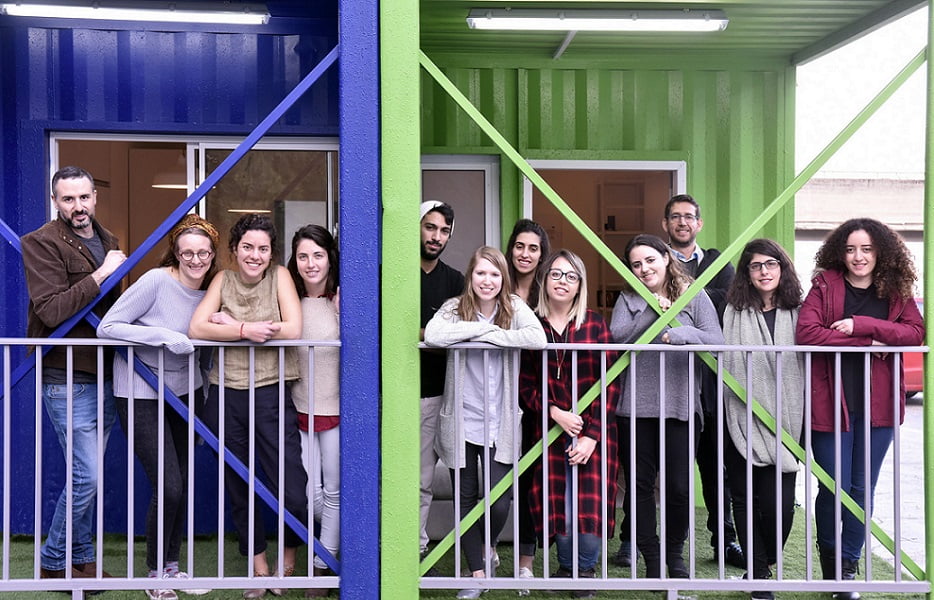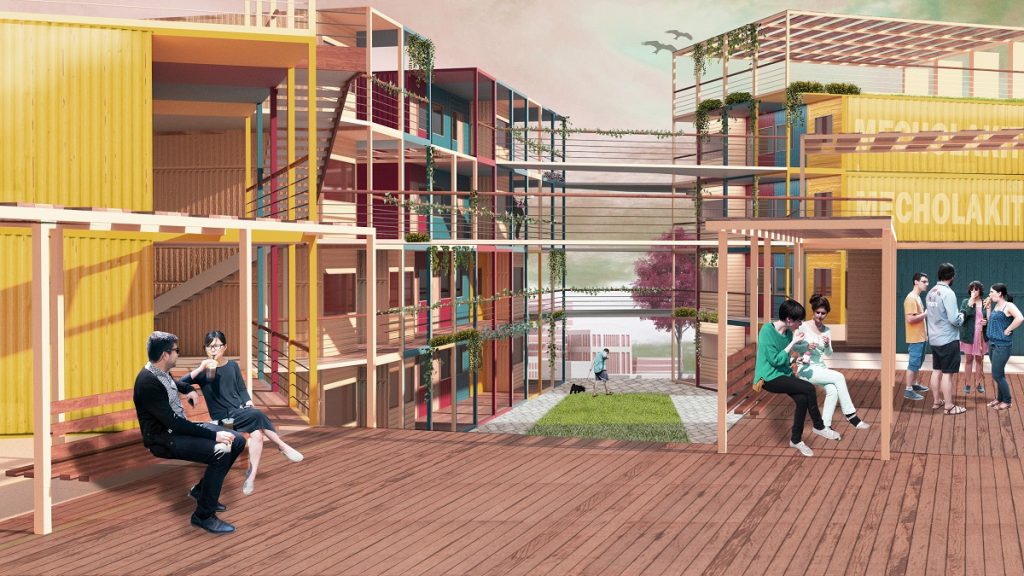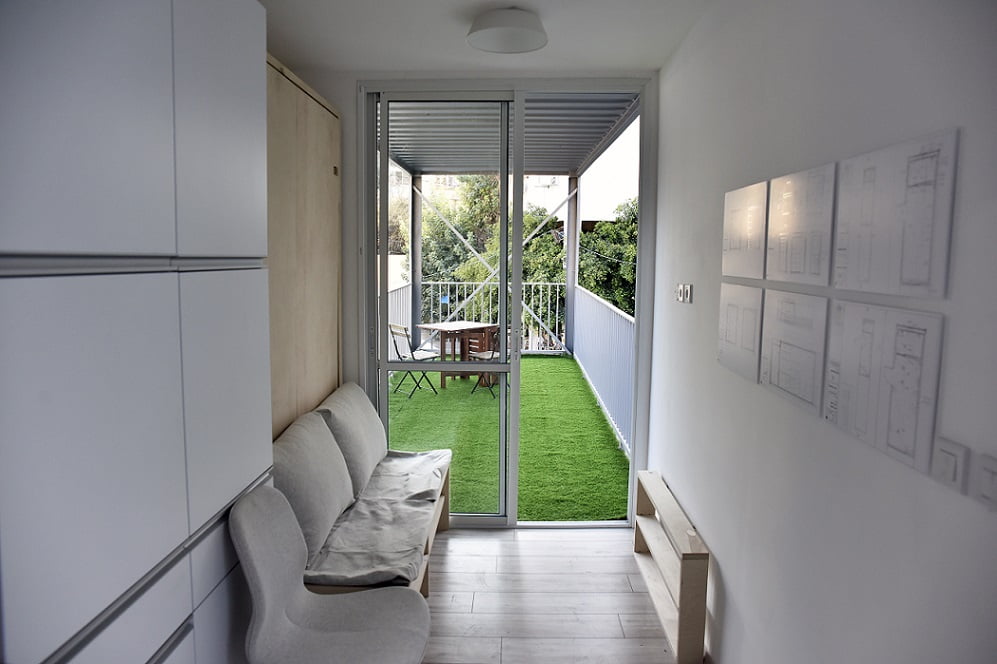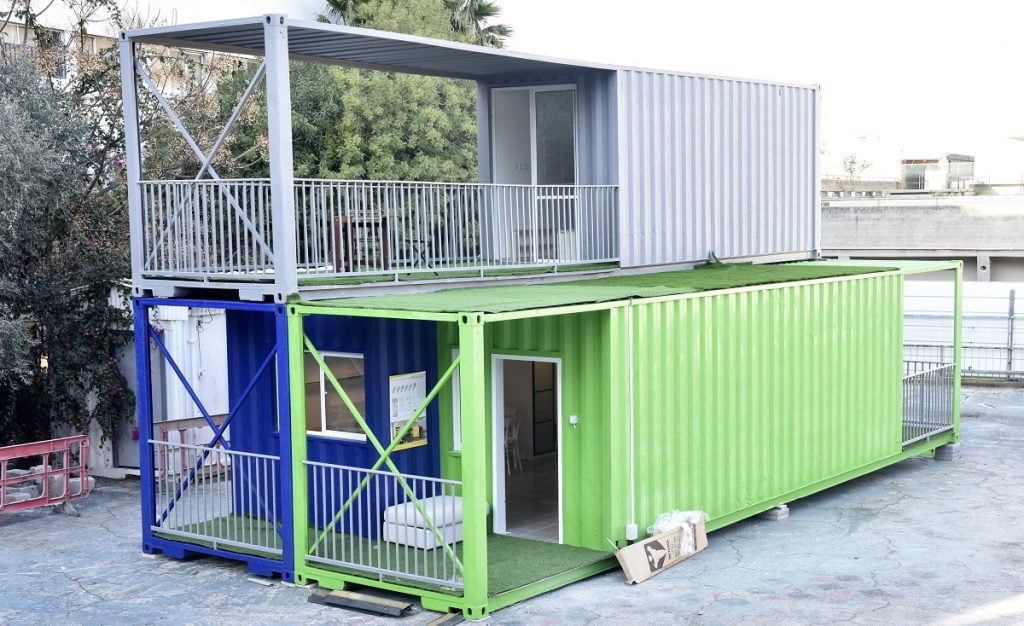The idea of living in a shipping container is not a new concept, but it may be becoming a fairly popular one. These containers are known to be easy to maintain, inexpensive, portable, durable, and an eco-friendly alternative to traditional building materials. The sustainability and affordability of containers have become so promising that some industry professionals even consider it the future of housing.
In Israel, however, where a population boom has led to crowded conditions and even a housing shortage driving up prices, there are still local issues that make it difficult to build containers for housing quickly and affordably. First, planning laws state that the minimum width of a room is 2.6 meters (8.5 feet) whereas the average width of a container 2.3 meters (7.5 feet). Second, civil defense guidelines in the country call for the addition of reinforced concrete “safe rooms” (or “mamad” in Hebrew) in homes and buildings, as mandated by the IDF Home Command since 1992 (after the first Gulf War) to protect people seeking refuge in the sealed rooms from incoming attacks.
Architecture students at the Technion’s Faculty of Architecture and Town Planning may not be able to change local law, but they have recently come up with some innovative solutions to combat the housing dilemma.
The students completed an innovative semester project in March, designing apartments and student dormitories made of large, standardized shipping containers developed and built for intermodal freight cargo transport. The project was conducted in the framework of the Technion students’ “One to One Studio” under the direction of project manager, PhD candidate and adjunct lecturer Guy Austern, and under the supervision of notable Israeli Architect Shamay Assif, who became Chair of the Center for Urban and Regional Studies and a professor at the Technion following roles as head of building and planning at the Israeli Ministry of Interior.

Architecture students from the Technion created unique housing solutions for their semester project. Photo via Sharon Tzur
After students formed groups and developed proposals that would integrate their modular building technologies into the urban environment, the faculty decided there would be a competition to showcase the best projects. The Rosh Haayin-based Isramarin modular construction company came on board, suggesting it would find a way to use and implement the winning project.
“The Technion’s Faculty of Architecture and Town Planning looked for cooperation in the industry to promote innovative solutions in the construction industry. The next few years will present us with greater challenges of pace and quality than those existing today, and we congratulate Isramarin for its efforts to examine, in practice, the ideas developed by the next generation of architects at the faculty,” Assif, said in a Technion statement.
“The construction industry is moving towards the use of modular construction methods,” said Terry Newman, CEO of Isramarin in the statement. “Container conversion to residential homes is common in major cities and recently residential neighborhoods have been built in London, Amsterdam and Las Vegas.”
These containers are an efficient and rapid housing solution, Austern tells NoCamels, noting that Isramarin applauded the students who “pushed tech to the limit” and “took an unorthodox approach.”
The students came up with a number of ideas showcasing their proposed spaces. Some proposals placed containers on the roofs of existing buildings as an alternative solution to National Master Plan 38, formulated to persuade homeowners to fortify buildings constructed before 1980 against earthquakes (and in which the building also undergoes aesthetically pleasing renovations and upgrades).
It was imperative that these containers be built quickly to save on time, money, and labor, Austern says. “The most amazing thing about the containers is that you can build them really, really fast, in just a little over two weeks,” he tells NoCamels.
SEE ALSO: Every Room With a View: Israeli Architect Designs Rotating Dubai Skyscraper
“Isramarin had a big interest in new tech for shipping containers. They were really excited. It was something they never thought of,” he adds. “I cannot stress enough the importance of their involvement.”
The final state of the competition was led by four groups of three students who presented their concepts for the project to build student dormitories under modular construction in the city of Haifa with a video.
Sign up for our free weekly newsletter
SubscribeTwo winning projects were chosen from the four groups, when “Isramarin realized there were two they wanted to market,” Austern says. Both groups developed the first prototype of their commercial model for the future collaboration, built in the courtyard of the Hadrian building, which is part of the historic Technion compound in Haifa’s Hadar HaCarmel neighborhood. Representatives of the Technion and the Isramarin company judged the competition.
Mecholakit
The Mecholakit project, created by students Shani Kellogg, Tamar Fradkin, and Maria Schwartz, offers a kit to assemble student dormitories from six fixed container modules that can be put together according to the target audience. The solutions were designed for an apartment of various sizes (up to five rooms) with different containers making up each room. These modules were not housing units themselves but rather a connection between the different spaces that could be incorporated into a housing unit.

The Mecholakit’s simulation of what their container facility would look like. Photo via Tamar Fradkin, Shani Kellogg, Marie Schwartz
One of the major problems that Austern was proud to say Mecholakit conquered was the issue of heat, a typical challenge in Israel.
“What Mecholakit did is very typical to Israel,” he says, referring to the small balcony that is part of the prototype, “The balcony doesn’t heat up and the walls provide self-shading. It’s a common solution.”
Compacting
The second project, Compacting, developed by Aya Ghraieb, Or Shitrit, and Racheli Kashi, offers a minimalist residential unit from a container, putting an emphasis on maximizing the use of the interior space to create comfortable living conditions for tenants. Their containers can be connected to existing buildings. The main space is a guest room, kitchen, and bedroom, with the bed pulled out of the wall to save space.

In the Compacting team’s prototype, the cushions are removed from the bench and the bed is pulled out of the wall cabinet to save space. Photo via Oren Eldar.
“The design within the small space of the container corresponded to the minimal student life pattern we as a team of students experience in our lives,” Shitrit tells NoCamels. “The difficulty in managing the economy and maintaining the students’ apartment always stands against the need to invest time in studies, so it was important for us to use the advantages of the container to create the ultimate space for this lifetime.”
Isramarin says it will find a way to develop these winning models with advanced construction methods in full scale in the future, with the participation and supervision of the students and facilitators.
SEE ALSO: Throwing Shade: Tel Aviv Competition Awards Teams For Innovative Shaded Structures
“The container is a durable and stable structure designed to withstand the most difficult weather conditions and enables unique planning, variety and quick construction,” Newman told Xnet.
“Recently, there has been a significant increase in the issue of the conversion of residential containers in Israel, mainly due to the flexibility of planning, high resistance to earthquakes, quality of construction, green and economical construction, and more. We, too, at Isramarin are thankful for the opportunity to learn together with the students from the intensive process of ‘One to One Studio’ at the Technion,” he added.
Related posts

Rehabilitation Nation: Israeli Innovation On Road To Healing

Israeli High-Tech Sector 'Still Good' Despite Year Of War






Facebook comments